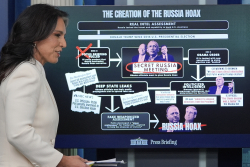A new “Great Game” is unfolding in the Caucasus and Central Asia, echoing the nineteenth-century rivalry between empires, with a modern, multipolar twist.
The term “Great Game” refers to the nineteenth-century strategic rivalry between the British and Russian Empires over influence in Central Asia, particularly in Afghanistan, Persia, and the Caucasus. Coined by British officer Arthur Conolly and popularized by Rudyard Kipling’s novel Kim, the phrase encapsulates a period of intense espionage, diplomacy, and territorial maneuvering.
The Caucasus region, situated between the Black and Caspian Seas, was a critical frontier. It served as a buffer zone between Russian ambitions in the south and British interests in India. Russia sought to expand its empire southward through the Caucasus into Persia and beyond, while Britain aimed to prevent any threat to its Indian holdings by countering Russian advances.
While the Caucasus was not the primary theater of the Great Game, it was deeply entangled in its dynamics. The region’s ethnic diversity, mountainous terrain, and proximity to imperial borders made it a hotspot for covert operations and diplomatic maneuvering. The Russian conquest of the Caucasus in the early nineteenth century was part of its broader strategy to secure its southern flank and challenge British dominance in Asia.
At first, the strategy proved successful. Russia gained territorial control and strategic depth, defeating Persian and Ottoman forces in a series of wars. By the mid-1800s, it had annexed much of the Caucasus region, including Georgia, Armenia, and Azerbaijan. The prolonged Caucasian War ended with the subjugation of the North Caucasus, including Chechnya and Dagestan. In Central Asia, Russia absorbed Kazakhstan, Turkmenistan, Uzbekistan, and Tajikistan, forming a vast buffer zone in the Asian steppes.
Today’s Russia, preoccupied with its war in Ukraine, is struggling to retain influence, block Western and Chinese expansion, and secure trade routes in the region. Ending the Ukraine war may help Russia regain cachet in the South Caucasus, while continued conflict restricts its regional power and economic leverage.
The EU, as it moves away from Russian energy dependence, is pursuing energy security through its ties with the Caucasus. China seeks economic access via the Middle Corridor. After setbacks from Israel’s military actions and loss of regional proxies, Iran, for the moment, is focused on countering Jerusalem’s influence and protecting its borders. Turkey, another contender for regional hegemony, aims to boost its leadership by backing its Turkic allies. Unlike the colonial-era Great Game, today’s dynamics are multipolar, with intersecting alliances and economic corridors, mainly in the energy sector.
Rewiring the Region: Key Energy Corridors
The shifting power dynamics in the South Caucasus are dramatically reshaping energy routes, and the region’s role as a strategic crossroads between Europe and Asia is more pronounced than ever.
Ankara is positioning itself as a regional energy hub, with the Zangezur Corridor enhancing its Eurasian footprint. The proposed transit route would reconnect mainland Azerbaijan with its Nakhchivan exclave through southern Armenia. If realized, it would enable uninterrupted Azerbaijani access to Nakhchivan for the first time since the Soviet era, strengthening Azerbaijan–Turkey connectivity and avoiding reliance on Iran and Russia. Bypassed by new routes, Tehran’s strategic relevance in regional energy transit is shrinking. The EU is quietly backing infrastructure that reduces dependence on Iranian and Russian networks.
Moreover, the Zangezur Corridor would serve as a complement to the Middle Corridor, a vital east-west trade route linking Turkey, the Caspian Sea, Central Asia, and China. The Middle Corridor, also known as the Trans-Caspian International Transport Route, is gaining momentum as a non-Russian alternative for East-West trade. For this, Azerbaijan becomes indispensable—there’s no viable substitute for its geography.
Azerbaijan is ramping up gas exports to Europe, via the Southern Gas Corridor, with plans to supply half of its 50 bcm annual production to the European Union. This route is critical for EU energy diversification, especially post-Ukraine war. Peace between Azerbaijan and Armenia would also enable Armenia’s inclusion in the Middle Corridor trade and energy route from China and Central Asia to Europe, bypassing Russia. This is crucial for Europe’s energy security as Georgia’s reliability declines. After a pro-Western phase, Georgia has significantly expanded its economic ties with Russia.
Azerbaijan benefits economically from the Ukraine war as Europe’s energy partner, strengthening its alliance with Turkey while pursuing its own economic interests. Azerbaijan’s Zangezur proposal is intended to be more unilateral, aiming for extraterritorial control over a single corridor.
By contrast, Armenia’s plan promotes multilateral connectivity with all neighbors, including Turkey and Azerbaijan. The EU favors Armenia’s inclusive model, seeing it as a way to stabilize the region and diversify energy routes. The EU is investing in infrastructure and diplomacy. Armenia’s “Crossroads of Peace” initiative and EU monitoring missions signal a pivot toward Europe. Despite its strong economic dependence on Russia, especially in the trade and energy sectors, Armenia is moving away from Russia militarily and politically, diversifying its arms suppliers and seeking closer economic ties with the West.
Russia’s Waning Grip
While Russia is preoccupied with its war against Ukraine, it sees its influence waning in the Caucasus. Moscow’s diminished leverage means countries like Armenia and Azerbaijan are more willing to defy it. It is no coincidence that Azerbaijan and Armenia seek a bilateral resolution of their long-standing dispute while Russia is focused on its war against Ukraine. Armenia now wants to break free of Russia’s grip.
Russia is attempting to maintain influence over Armenia, but its dominance has quickly diminished since the 2020 conflict, when Azerbaijan retook parts of Nagorno-Karabakh without Russian intervention. In 2023, Azerbaijan regained control over all of Nagorno-Karabakh, resulting in the ethnic cleansing of the entire Armenian population, while Russian “peacekeepers” stood by. Previously, Russia’s sway relied on managing “frozen” conflicts like this, but it declined to aid Armenia.
Moscow’s failure to support Armenia during the 2020 and 2023 Karabakh conflicts has deeply eroded trust. Still, it may have surprised the Kremlin that the Armenia-Azerbaijan peace talks are now taking place without Russian mediation—a historic shift. The July 2025 meeting in Abu Dhabi marked the first bilateral summit without Moscow at the table. On July 10, Armenian and Azerbaijani leaders held their first direct talks without mediators after over 30 years of conflict. This followed Armenian prime minister Nikol Pashinyan’s recent visit to Istanbul to meet President Recep Tayyip Erdogan.
Armenians once saw Russia as a protector against Azerbaijan and Turkey’s potential aggression, but now view Moscow less favorably. In fact, this may become a self-fulfilling prophecy. By aligning too much with the West, Armenia risks being seen as anti-Russian and may face severe consequences in the future. For the moment, though, Russia needs Armenia as a trade corridor to South Asia and the Middle East. Since its defeat by Azerbaijan, Armenia has sought to distance itself from Russia and improve ties with Turkey, despite historical tensions stemming from the 1915–16 Armenian genocide by Ottoman forces.
Azerbaijan, as well, has become more assertive and multipolar, a friend to all. Due to the war in Ukraine and sanctions on Russia, Azerbaijan has boosted its oil and gas exports to Europe and has become a strategic energy partner for the EU. Meanwhile, Russian oil and gas exports via Azerbaijan have also increased, enabling Russia to continue its energy trade and circumvent Western sanctions. Azerbaijan has also played a role in facilitating Russia’s trade with Iran. At the same time, Baku seeks to diversify its diplomatic relations, strengthening ties with Ankara and Jerusalem.
Turkey, in particular, sees its regional influence rising. Ankara is now a key player, mediating between Baku and Moscow, and deepening its strategic footprint in the region. If Turkey maintains its current strategy, it could emerge as a key beneficiary of this new Great Game. At the same time, Russia risks losing its monopoly if it focuses on Ukraine at the expense of the Caucasus and Central Asia.
The Main Prize Goes to…China
China also presents a challenge to Russian interests in Central Asia. Both nations vie for influence through initiatives like Russia’s Eurasian Economic Union (EAEU) and China’s Belt and Road Initiative. China declined Moscow’s efforts to merge these projects. A leaked Kremlin memo indicates Russian concerns that Western sanctions are enabling China and others to displace Russian businesses in the region, take over trade flows, and shift production away from Russia. The report notes that Russia seeks to regain global trade access by positioning itself at the heart of a Eurasian bloc that rivals the United States, the EU, and China, thereby boosting its global status.
Yet Russia’s EAEU includes only four of the nine states on Russia’s southern border, as some countries, such as Uzbekistan and Tajikistan, want to maintain their independence in trade matters. Nevertheless, the EAEU promotes Russia’s trade with Central Asia and strengthens its economy despite sanctions. It is unclear if US President Donald Trump will act on his latest threats: a 10-day deadline for Russia to end the war in Ukraine and possible harsher sanctions, including 100 percent tariffs against Russia and secondary sanctions against its allies.
A White House official clarified to CNN that when the president referred to “secondary tariffs”, he meant 100 percent tariffs on Russia and secondary sanctions on other countries that buy Russian oil. If he moves against Russia’s Caucasus and Central Asian trading partners, it would most likely end all remaining US influence.
Russia needs to expand its energy ties with Central Asia by diverting gas supplies and planning new pipelines to compensate for the lost European market. Supplying energy to Central Asia is less profitable for Moscow than its former gas exports to Europe. This supports the economies of the Central Asian countries, which themselves have shortages of gas and refining capacity.
Yet, Central Asian states are striving for balanced power politics and do not want to be exclusively tied to Russia, but rather to establish plurilateral, independent regional cooperation, also with a view to partnerships with China and Western countries.
Instead of punishing Central Asian and Caucasian countries for their trade with Russia, the United States and Europe could do better by offering closer economic ties, increasing Moscow’s fears of a realignment by the two regions toward the West. It’s a pity that Westerners have forgotten how to play the Great Game.
About the Authors: Mathew Burrows and Josef Braml
Dr. Mathew Burrows is Counselor to the Executive Office of the Washington DC-based Stimson Center and author of a recently published report on Russia Futures, which examines Moscow’s ties to the Caucasus and Central Asia, available at https://www.stimson.org/2025/russia-futures/.
Dr. Josef Braml is the Secretary General of the German Group and the European Director of the Trilateral Commission—an influential global platform for dialogue between America, Europe, and Asia. Previously, from 2006 to 2020, he worked at the German Council on Foreign Relations (DGAP).
Image: V. Baturin / Shutterstock.com.

















